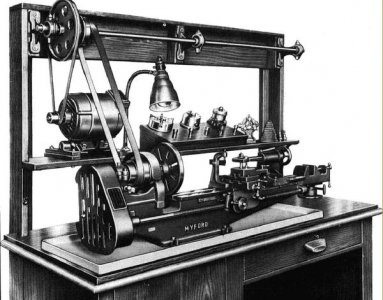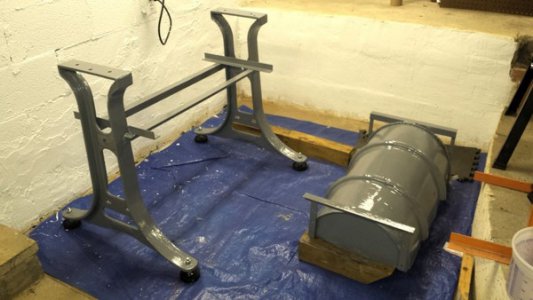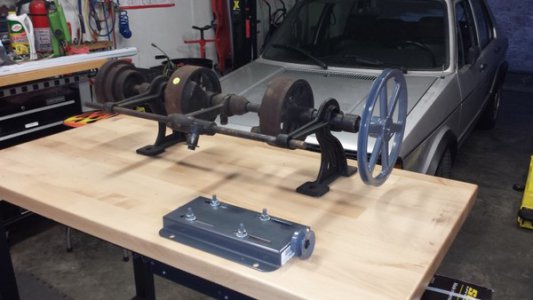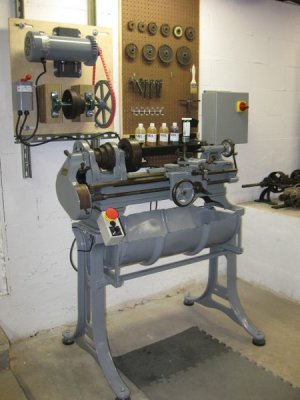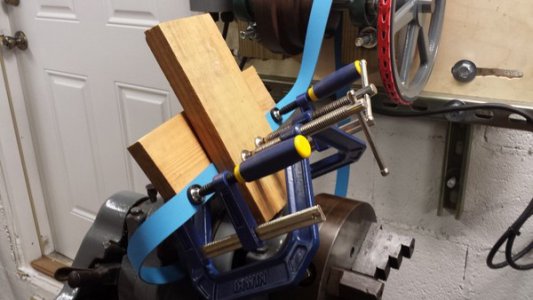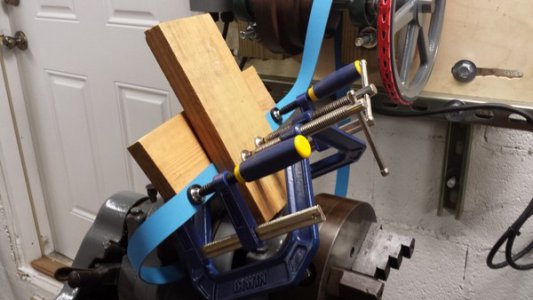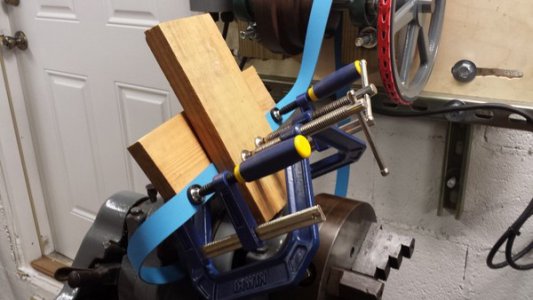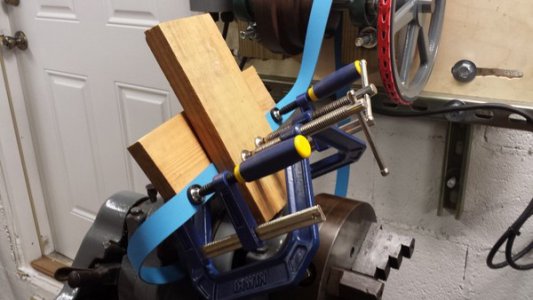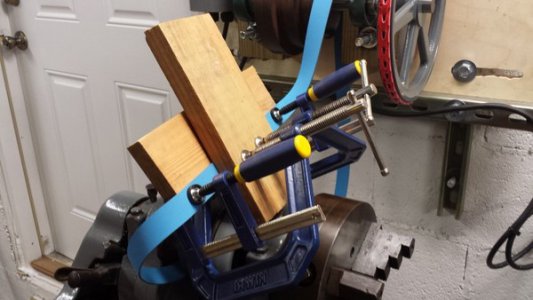- Joined
- Dec 6, 2015
- Messages
- 808
Forgot to add, I ordered a set of four of these leveling feet:
http://www.mcmaster.com/#63965K67
Also put in an order with blue chip machine shop for some A/B/C oils.
The cast iron legs are primed and hopefully will be able to finish working on their paint the rest of this week/weekend.
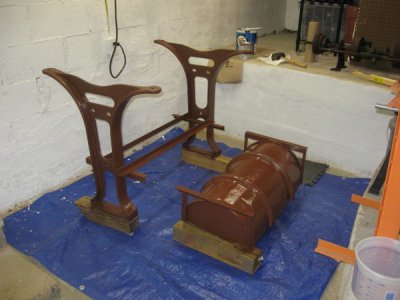
I did not get the South Bend wrenches with the lathe so I would like to find those, an MT2 taper drill chuck for the tailstock, etc.
It is looking great! You have access to things I can only dream of. I have to settle with single phase, 110v, and the cheapest way forward is the 1725 rpm a/c motor I am trying to get connected.
You are also correct. For a 1725 rpm motor, you will need that 10" pulley. The counter shafts had something similar in size that was driven by the motors, which was also usually an a/c motor at the time. The original motor was a 1/3 hp motor. The big factor is the flat belt pulley size, and the cone pulley size. If those are equal, the ten might not be enough with a 1725 rpm motor. If you can do a variable speed motor, that's what you want. I think I tossed something on that website that had a pulley size calculator and would tell you the spindle speed, with a counter shaft.
Sent from my iPad using Tapatalk


